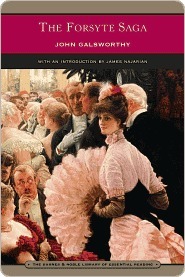The Forsytes: An In-Depth Look at a Classic Saga

Introduction
‘The Forsytes’ is a monumental saga written by John Galsworthy, which reflects the complexities of the British upper-middle-class society in the late 19th and early 20th centuries. Set against the backdrop of a rapidly changing world, the novel explores themes of class, familial relationships, and the passage of time. Its relevance endures today as it continues to resonate with contemporary audiences, presenting a critical examination of societal norms and personal desires.
The Forsyte Saga
The Forsyte Saga, first published in 1906, is a collection of three novels and two interludes. The narrative primarily revolves around the Forsyte family, focusing on key characters such as Soames Forsyte, a successful but emotionally stunted property owner, and his spirited wife, Irene. Their tumultuous relationship encapsulates the tensions between societal expectations and individual aspirations, making the story both captivating and relatable.
In recent years, interest in ‘The Forsytes’ has resurged, particularly due to adaptations for television. The BBC’s 2002 adaptation brought the story of the Forsyte family to a new generation, reigniting interest in Galsworthy’s work. The series highlighted the struggles of the characters as they navigate love, duty, and betrayal, providing a fresh perspective on the historical context of the novels.
Significance and Influence
Galsworthy received the Nobel Prize in Literature in 1932, which underscores the significance of his insights into the human condition. The Forsytes serve as a microcosm of a changing society, reflecting issues such as the rise of capitalism, changes in gender roles, and the decline of the Victorian era’s moral certainties. Galsworthy’s portrayal of the Forsyte family has influenced countless writers, providing a template for exploring the complexities of family dynamics within a changing social landscape.
Conclusion
The legacy of ‘The Forsytes’ continues to be relevant in modern discussions about class and identity. With ongoing interest in literature that addresses societal changes, Galsworthy’s intricate exploration of the conflicting desires and responsibilities of the Forsyte family remains captivating. As readers reflect on the themes presented in the saga, it serves as a poignant reminder of how personal choices are often influenced by societal expectations, a topic that transcends time. Future adaptations and discussions will likely continue to shed light on the relevance of this classic tale, ensuring that ‘The Forsytes’ remains a cherished part of literary history.









